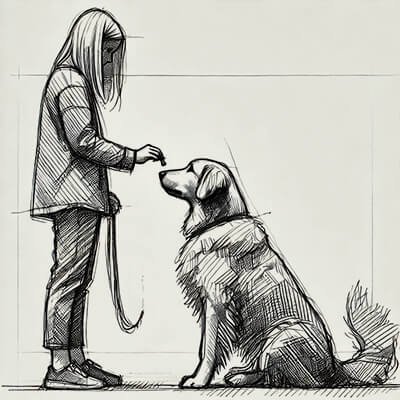Teaching your dog to sit is one of the most fundamental commands and a great starting point for training. It’s simple, practical, and helps establish your role as a confident leader while building trust with your pet. Here’s a step-by-step guide of how to teach your dog to sit.
The “sit” command is more than just a trick—it’s a way to:
Start training in a quiet, distraction-free area to help your dog focus. As your dog gets better, gradually introduce more distractions to reinforce their ability to obey in different settings.
Dogs respond well to positive reinforcement. Use small, tasty treats, praise, or a favorite toy to motivate them. Ensure the reward is something your dog values to keep them engaged.

Hold a treat in your hand and let your dog see and smell it. This helps capture their focus and gets them ready to follow your instructions.


Repetition is key to solidifying the behavior. Practice the command several times in short training sessions (5-10 minutes) to avoid overwhelming your dog.
Once your dog consistently sits on command, gradually reduce the frequency of treats. Continue using verbal praise or a pat to reward them. This ensures they’ll respond even when no treats are available.
After mastering “sit” in a quiet setting, introduce distractions like other people, pets, or noises. This step helps your dog obey the command in real-world situations.
Teaching your dog to sit is an essential skill that makes life easier for both you and your furry friend. With patience, consistency, and positive reinforcement, your dog will master this command in no time.
At Region K9, we offer a range of services, including dog training, puppy training, and behavior management. Whether you’re teaching the basics like “sit” or working on advanced obedience, our expert trainers are here to help you and your dog build a lasting bond.